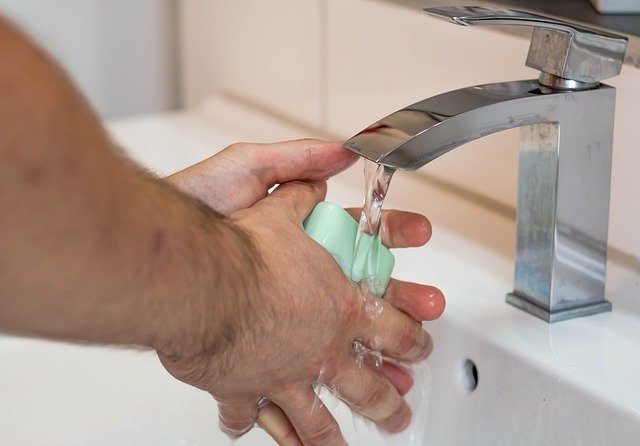
In a new study, researchers estimated that improving the rates of handwashing by travelers passing through just 10 of the world’s leading airports could significantly reduce the spread of many infectious diseases.
And the greater the improvement in people’s handwashing habits at airports, the more dramatic the effect on slowing the disease.
The findings deal with infectious diseases in general including the flu. The results would apply to any such disease and are relevant to the current outbreak
The research was conducted by a team at the University of Cyprus and elsewhere. It is based on epidemiological modeling and data-based simulations.
People can be surprisingly casual about washing their hands, even in crowded locations like airports where people from many different locations are touching surfaces such as chair armrests, check-in kiosks, security checkpoint trays, and restroom doorknobs and faucets.
Based on data from previous research by groups including the American Society for Microbiology, the team estimates that on average, only about 20% of people in airports have clean hands—meaning that they have been washed with soap and water, for at least 15 seconds, within the last hour or so.
The other 80% are potentially contaminating everything they touch with whatever germs they may be carrying.
The team says 70% of the people who go to the toilet wash their hands afterward. The other 30% don’t.
And of those that do, only 50% do it right. Others just rinse briefly in some water, rather than using soap and water and spending the recommended 15 to 20 seconds washing.
That figure, combined with estimates of exposure to the many potentially contaminated surfaces that people come into contact with an airport, leads to the team’s estimate that about 20% of travelers in an airport have clean hands.
Improving handwashing at all of the world’s airports to triple that rate, so that 60% of travelers to have clean hands at any given time, would have the greatest impact, potentially slowing global disease spread by almost 70%, the researchers found.
Deploying such measures at so many airports and reaching such a high level of compliance may be impractical, but the new study suggests that a big reduction in disease spread could still be achieved by just picking the 10 most significant airports based on the initial location of a viral outbreak.
Focusing handwashing messaging in those 10 airports could potentially slow the disease spread by as much as 37%, the researchers estimate.
Even small improvements in hygiene could make a noticeable dent.
Increasing the prevalence of clean hands in all airports worldwide by just 10%, which the researchers think could potentially be accomplished through education, posters, public announcements, and perhaps improved access to handwashing facilities, could slow the global rate of the spread of disease by about 24%.
The team says eliciting an increase in hand-hygiene is a challenge. But new approaches in education, awareness, and social-media nudges have proven to be effective in hand-washing engagement.
The lead author of the study is Professor Christos Nicolaides from the University of Cyprus.
The study is published in Risk Analysis.
Copyright © 2019 Knowridge Science Report. All rights reserved.



